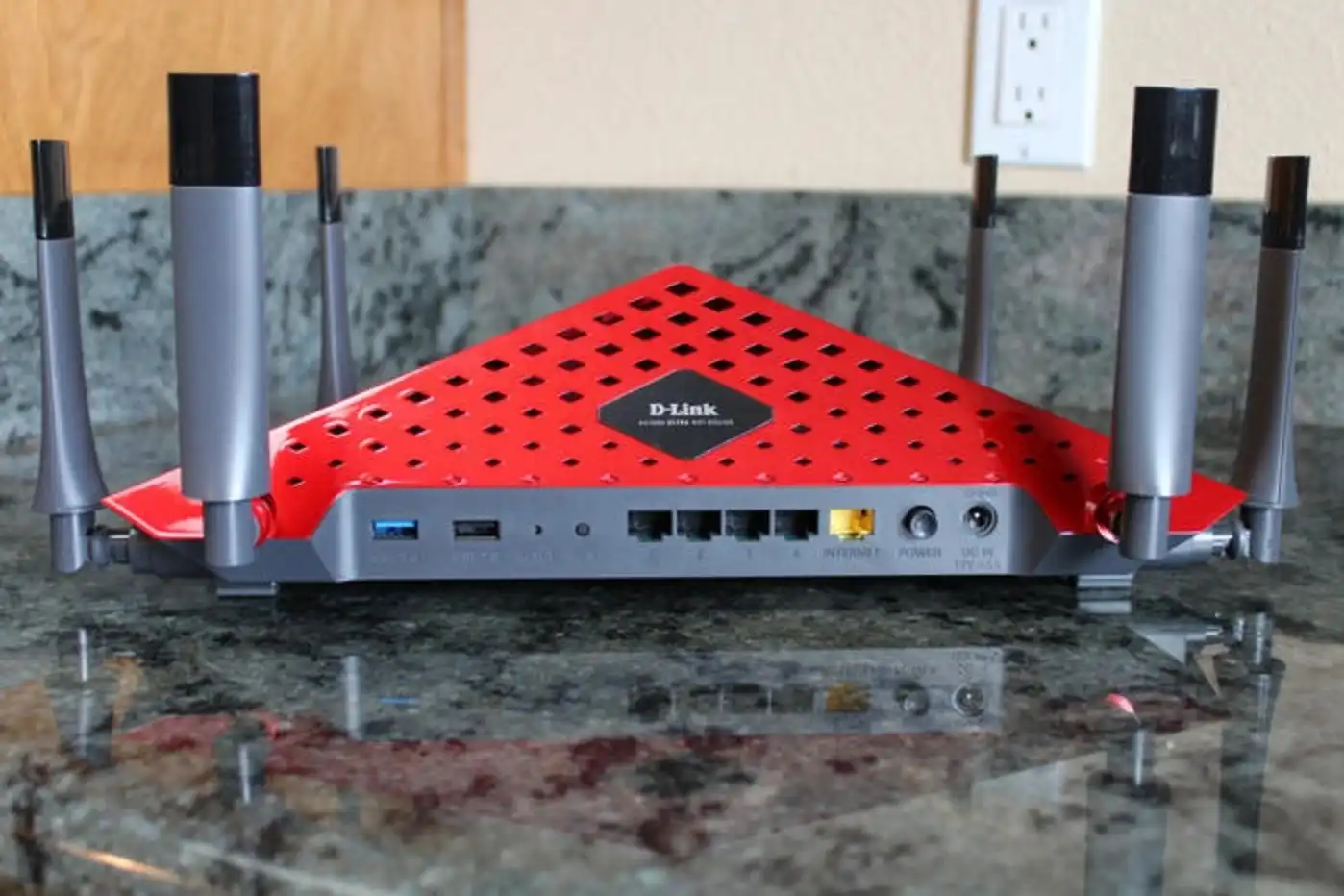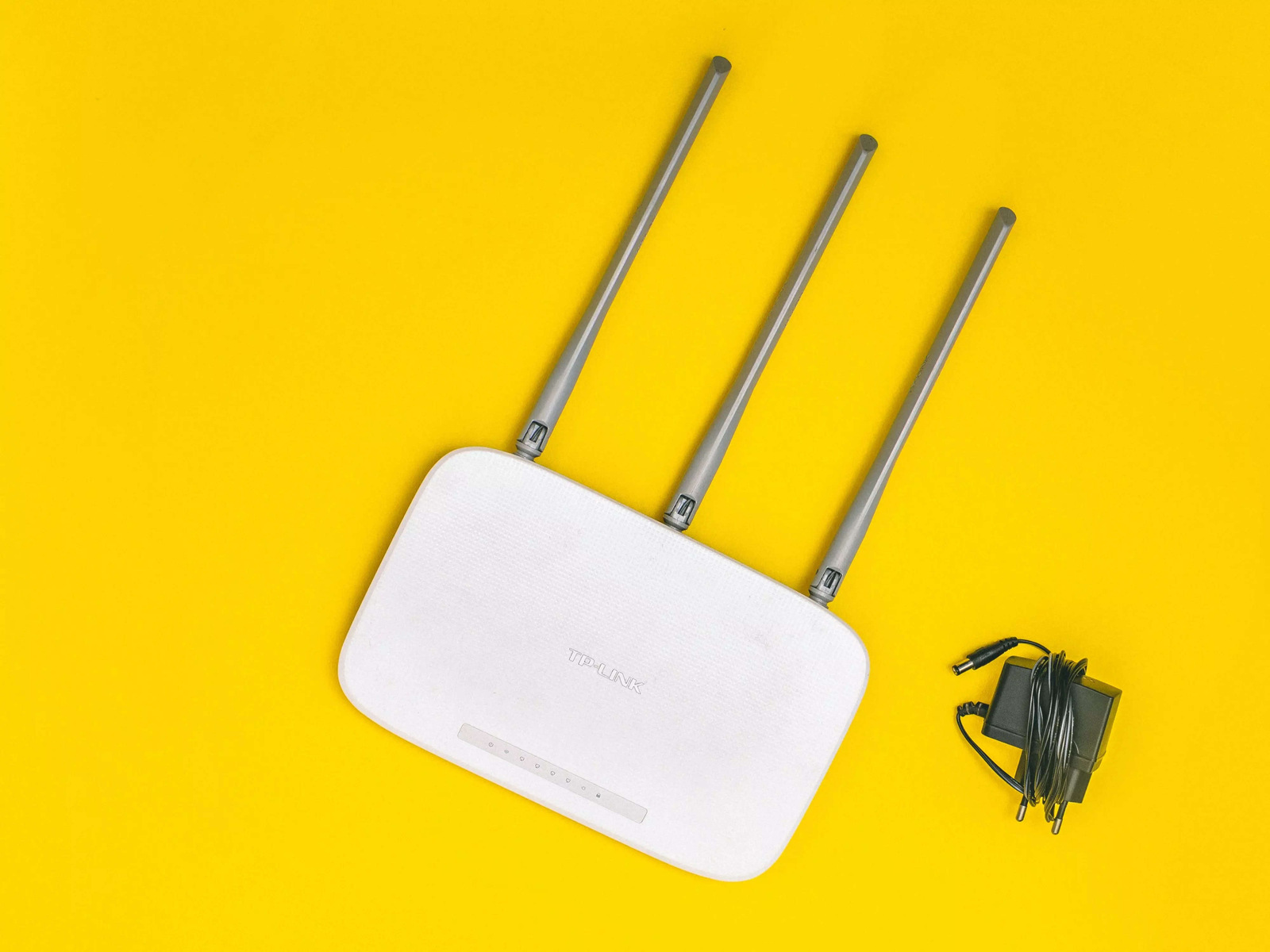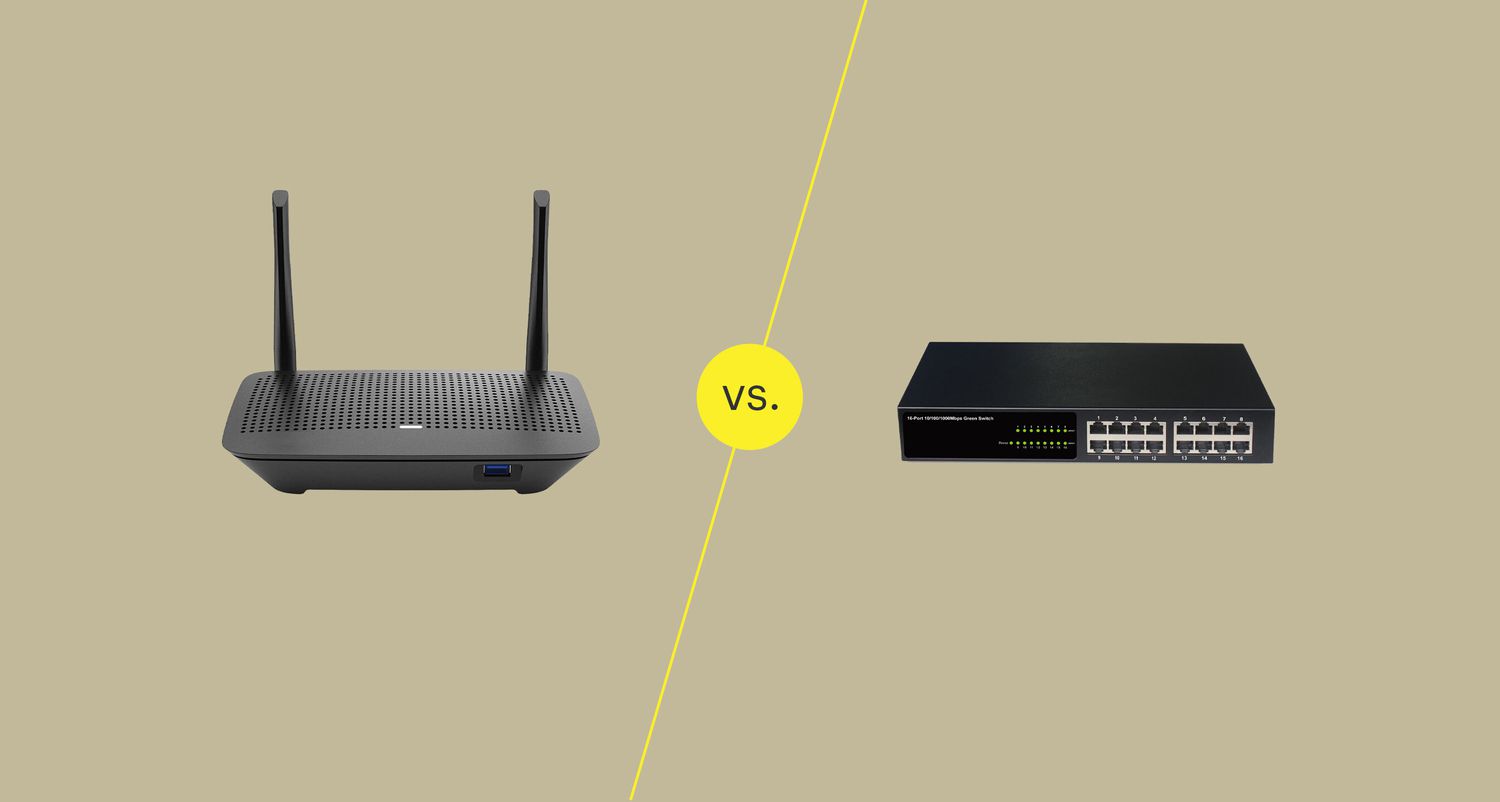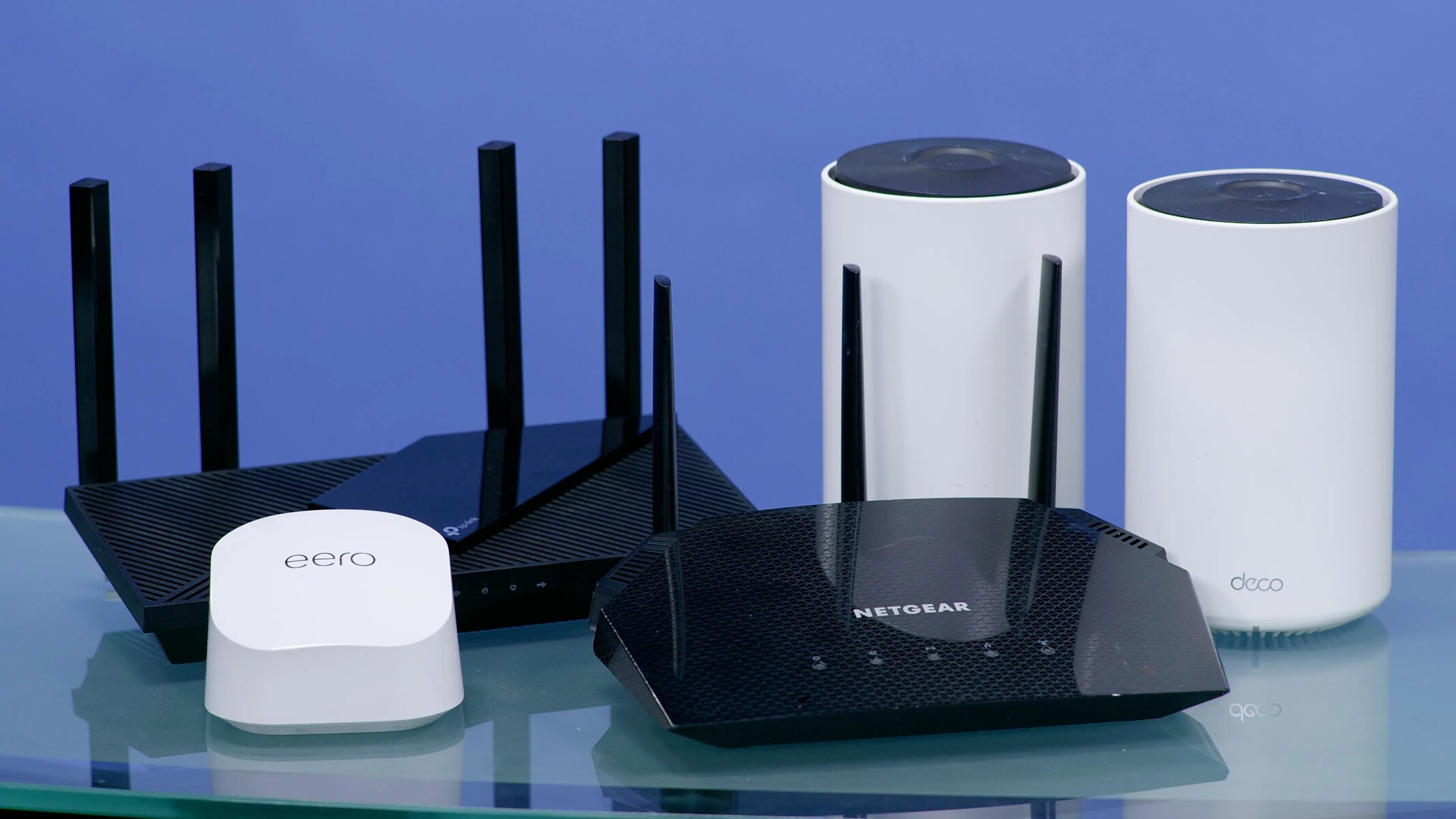Introduction
Welcome to the world of wireless technology! In this digital age, where connectivity and mobility are paramount, wireless solutions have become indispensable in our daily lives. One of the most popular wireless technologies is Wireless Local Area Network (WLAN), which enables devices to connect to a network without the need for physical cables.
A Wireless LAN, or WLAN, provides users with the freedom to access the internet or share files and resources within a specific area, such as a home, office, or public hotspot. With the growing demand for seamless connectivity, understanding what a Wireless LAN is and how it works can significantly enhance our digital experience.
In this article, we will delve into the intricacies of wireless LANs, exploring their definition, functionality, advantages, and disadvantages. We will also discuss the various technologies used in wireless LAN implementations, as well as the essential components and security considerations associated with them.
By the end of this article, you will have a comprehensive understanding of wireless LANs and be equipped with the knowledge to implement and optimize them based on your specific needs.
Definition of Wireless LAN
A Wireless Local Area Network (WLAN) is a type of network that allows devices to connect to each other and share information wirelessly within a defined area. Unlike traditional wired networks that rely on physical cables, a WLAN utilizes radio waves to transmit and receive data between devices.
A Wireless LAN typically consists of a wireless router or access point that serves as the central hub for communication, and multiple wireless devices, such as laptops, smartphones, and tablets, that connect to the network. These devices communicate with each other and the access point using Wi-Fi technology, enabling fast and convenient data exchange.
The range of a Wireless LAN varies depending on factors such as the power of the access point, the presence of physical obstructions, and the frequency or band used for transmission. Generally, a WLAN can cover a relatively small area, such as a room, an office floor, or a campus, but it can also be extended with additional access points to cover larger areas.
Wireless LANs have become increasingly prevalent due to the convenience and flexibility they offer. With a WLAN, users can connect to the internet or access shared resources without being tethered to a physical connection. This freedom of mobility makes WLANs ideal for environments where wired connections are impractical or impossible.
It is worth mentioning that Wireless LANs are commonly used in both residential and commercial settings. Homes and small businesses often use WLANs for internet access and file sharing, while larger enterprises implement WLANs to provide connectivity to a multitude of devices and support various business processes.
With the rapid advancement of wireless technology, WLANs have evolved to offer faster speeds, improved security features, and better overall performance. These advancements have made WLANs a crucial component of our interconnected world, enabling seamless connectivity and enhancing productivity across industries.
How Does a Wireless LAN Work?
A Wireless Local Area Network (WLAN) operates using radio waves to establish communication between devices. The key components involved in the functioning of a WLAN are the access point, wireless devices, and the communication protocol.
At the heart of a WLAN is the access point (AP), which acts as a central hub for network connectivity. The AP is responsible for transmitting and receiving data between the wireless devices and connecting them to the wired network or the internet. It achieves this by converting the data received from the wireless devices into a format compatible with wired networks and vice versa.
Wireless devices, such as laptops, smartphones, and tablets, connect to the WLAN by locating and establishing a secure connection with the nearest access point. This connection is established through a wireless standard, such as Wi-Fi, which defines the rules and protocols for data transmission over the airwaves.
When a wireless device wants to send data, it first checks for available access points, selects the one with the strongest signal, and establishes a connection. This connection is authenticated and encrypted to ensure privacy and security. Once connected, the wireless device can send and receive data to and from other devices on the WLAN.
When data is transmitted over a WLAN, it is broken down into smaller packets and transmitted through the air in the form of radio waves. These radio waves are received by the access point and converted back into data packets, which are then forwarded to the appropriate destination on the network or the internet.
The communication within a WLAN is facilitated by the use of channels. Channels allow multiple devices to communicate simultaneously without interfering with each other, similar to different radio stations broadcasting on separate frequencies. The access point assigns each connected device to a specific channel, ensuring smooth and efficient data transmission.
Overall, the functioning of a WLAN relies on the collaboration between the access point, wireless devices, and the wireless standard. This synergy ensures seamless connectivity and enables wireless devices to communicate with each other and access network resources without the limitations of physical cables.
Advantages of a Wireless LAN
Wireless Local Area Networks (WLANs) offer numerous advantages that make them an appealing choice for both personal and business use. Let’s explore some of the key advantages of implementing a WLAN:
- Flexibility and Mobility: Perhaps the most significant advantage of a WLAN is the freedom it provides. Users can connect to the network and access resources from anywhere within the coverage area. This flexibility allows for greater mobility, whether it’s working remotely, collaborating in different areas of an office, or accessing the internet in public places like cafes or airports.
- Cost-effective Installation: WLANs eliminate the need for extensive cabling infrastructure, which can be costly and time-consuming to install. With a WLAN, devices connect wirelessly to the network, reducing the cost and complexity associated with physical cables. This can be especially beneficial in situations where wired connections are impractical, such as historic buildings or temporary event spaces.
- Scalability: WLANs are highly scalable, allowing for easy expansion as your network needs grow. Additional wireless devices and access points can be added to accommodate more users or extend coverage without disrupting the existing infrastructure. This scalability is crucial for businesses that anticipate growth or need to adapt to changing demands.
- Convenience and Productivity: With a WLAN, users can access information, collaborate, and share resources seamlessly. The ability to connect wirelessly eliminates the physical barriers often associated with traditional wired networks. This convenience boosts productivity, as employees can access data and applications on the go, improving collaboration, and enabling real-time decision-making.
- Enhanced Connectivity: WLANs support higher data transfer rates, allowing for faster and more reliable internet access. This is especially important for bandwidth-intensive tasks such as streaming high-definition videos, online gaming, or transferring large files. By providing a stable and efficient connection, WLANs elevate the overall user experience.
- Easy Network Management: Wireless LANs offer simplified network management compared to wired networks. Network administrators have greater visibility into the network, with centralized control over access points and user authentication. Configuration changes and updates can be applied remotely, minimizing downtime and reducing administrative overhead.
These advantages highlight the immense value of implementing a Wireless LAN. From increased mobility and productivity to cost-effectiveness and scalability, WLANs empower users and businesses to thrive in today’s connected world.
Disadvantages of a Wireless LAN
While Wireless Local Area Networks (WLANs) offer numerous benefits, it’s important to consider the potential drawbacks. Understanding the disadvantages of a WLAN can help you make informed decisions about its implementation. Let’s explore some of the key disadvantages:
- Interference and Signal Range: WLANs can be susceptible to interference from other electronic devices operating on the same frequency, such as microwaves or cordless phones. Additionally, the signal range of a WLAN may be limited, especially in environments with physical obstructions like walls or buildings. This limitation can impact the coverage and performance of the network.
- Security Risks: WLANs, by their nature, broadcast data over the airwaves, making them more vulnerable to unauthorized access. Without proper security measures in place, WLANs can be susceptible to eavesdropping, data breaches, and unauthorized usage. It is crucial to implement robust encryption methods, strong authentication protocols, and regular security updates to mitigate these risks.
- Speed and Bandwidth: While WLANs generally offer fast connectivity, the actual speed and bandwidth can be influenced by several factors, including the number of connected devices and their activity levels. Congestion and interference within the network can impact the overall speed and performance of individual devices, leading to reduced throughput.
- Reliability: WLANs rely on radio-based transmission, which can be prone to occasional signal disruptions and fluctuation in performance. External factors such as weather conditions, electromagnetic interference, or physical obstacles can impact the reliability of the connection. This may lead to intermittent disruptions or slower data transfer rates.
- Infrastructure and Equipment Costs: While WLANs can eliminate the need for extensive cabling infrastructure, they require an investment in hardware, including access points, routers, and wireless network interface cards for devices. Additionally, the need for regular equipment updates and maintenance may incur additional expenses over time.
- Compatibility and Standards: WLAN technologies evolve over time, and new standards are introduced to enhance performance and security. This can lead to compatibility issues between older and newer devices, requiring careful consideration when implementing or expanding a WLAN network.
It’s essential to be aware of these disadvantages to take appropriate measures and address them effectively. Through proper planning, implementation, and ongoing management, many of these disadvantages can be mitigated, ensuring a reliable and secure WLAN environment.
Types of Wireless LAN Technologies
A variety of wireless LAN (WLAN) technologies exist to meet different connectivity needs and network requirements. Let’s explore some of the common types of WLAN technologies:
- Wi-Fi (802.11): Wi-Fi is the most widely used WLAN technology and operates based on the IEEE 802.11 standard. It offers various versions, including 802.11n, 802.11ac, and the latest 802.11ax (Wi-Fi 6). Wi-Fi uses radio frequency bands to transmit and receive data, providing high-speed connectivity over short to medium distances.
- Zigbee: Zigbee is a low-power wireless technology designed for applications requiring low data rates and extended battery life. It is commonly used in home automation systems, industrial control, and healthcare monitoring devices. Zigbee operates on the 2.4 GHz frequency band and supports mesh network topologies, allowing devices to communicate with each other, even if they are out of range of the central hub.
- Bluetooth: While primarily used for short-range wireless communication between devices, Bluetooth can also be employed for WLAN applications. Bluetooth uses the 2.4 GHz frequency band and is commonly found in smartphones, laptops, and IoT devices. It has evolved to support higher data transfer rates, making it suitable for small-scale WLAN deployments.
- WirelessHART: WirelessHART is a wireless technology specifically designed for industrial settings. It operates on the 2.4 GHz frequency band and is based on the HART (Highway Addressable Remote Transducer) protocol. WirelessHART enables wireless communication between field devices, control systems, and asset management systems, improving efficiency and reducing costs in industrial environments.
- Long Term Evolution (LTE): LTE, commonly known as 4G, is a cellular network technology that provides high-speed wireless connectivity. While primarily used for wide area mobile networks, LTE can also be utilized as a wireless LAN technology in certain scenarios. LTE offers significantly higher data transfer rates compared to traditional WLAN technologies, making it suitable for large-scale deployments or areas with high user density, such as stadiums or convention centers.
Each of these WLAN technologies offers distinct features and capabilities, catering to specific use cases and requirements. The choice of technology depends on factors such as data transfer speeds, range, power consumption, and scalability.
It’s important to carefully evaluate the needs of your network and consider factors such as coverage area, number of devices, and data requirements to select the most suitable WLAN technology for your specific application.
Components of a Wireless LAN
A Wireless Local Area Network (WLAN) consists of various components working together to enable wireless connectivity and data transmission. Let’s explore the key components that make up a WLAN:
- Access Point (AP): The access point is a central device that serves as the gateway between wireless devices and the wired network or the internet. It acts as a bridge, facilitating the exchange of data between wireless devices and the network infrastructure. The access point also handles authentication and encryption to secure the wireless network.
- Wireless Clients: Wireless clients are the devices that connect to the WLAN, such as laptops, smartphones, tablets, and IoT devices. These devices use Wi-Fi or other wireless technologies to communicate with the access point and access network resources. Wireless clients must support compatible wireless standards and have the necessary wireless network interface cards (NICs) to connect to the WLAN.
- Wireless Network Interface Card (NIC): A wireless network interface card, also known as a wireless adapter, is a hardware component that enables wireless devices to connect to a WLAN. It converts the digital data from the device into radio waves for transmission and vice versa. Most modern devices come with built-in wireless NICs, while older devices may require an external adapter for wireless connectivity.
- Wireless Antennas: Wireless antennas are crucial components that receive and transmit radio waves between the access point and wireless devices. The design and placement of antennas significantly impact the range, coverage, and performance of a WLAN. Different types of antennas, such as omni-directional and directional antennas, are used based on the specific requirements of the network.
- Network Switch: A network switch is a device that manages the flow of data within a wired network. In a WLAN, the network switch connects to the access point and handles the communication between the access point and the wired network. It provides additional functionality, such as VLAN (Virtual Local Area Network) support and Power over Ethernet (PoE) capability to power the access point.
In addition to these primary components, WLANs may also incorporate other devices or technologies to enhance functionality and security, such as wireless controllers, external antennas for improved coverage, and network security appliances for advanced threat protection.
By understanding these key components and their roles, network administrators can effectively design, deploy, and manage a robust and reliable wireless LAN infrastructure.
Security Considerations in Wireless LANs
Ensuring robust security is crucial when setting up a wireless Local Area Network (LAN). Wireless networks are inherently more vulnerable to attacks compared to wired networks due to the broadcast nature of radio waves. Here are some key security considerations to strengthen the security of your wireless LAN:
- Encryption: Implementing strong encryption protocols is vital to protect data transmitted over a wireless LAN. The most widely used encryption protocol for WLANs is Wi-Fi Protected Access (WPA2) or the latest WPA3. These protocols encrypt data and provide a secure communication channel between wireless clients and the access point, preventing unauthorized interception or manipulation of data.
- Authentication: Utilize strong authentication methods to prevent unauthorized access to your wireless LAN. Use complex and unique passwords for your network’s Pre-Shared Key (PSK) or consider implementing an enterprise-level authentication system, such as Wi-Fi Protected Access Enterprise (WPA-Enterprise), which uses 802.1X authentication and supports the use of digital certificates.
- Access Control: Control access to your wireless LAN by restricting connectivity to authorized devices only. Implement a MAC (Media Access Control) address filtering mechanism on your access points to whitelist specific devices. Additionally, consider using a separate guest network to isolate and provide limited access to visitors while keeping your primary network secure.
- Regular Updates and Patches: Keep all devices, including access points and wireless clients, updated with the latest firmware and security patches. These updates often address known vulnerabilities and address any weaknesses in the system, ensuring a more secure wireless LAN environment.
- Wireless Intrusion Detection System (WIDS): Implement a WIDS solution to monitor the wireless network for any suspicious or unauthorized activities. WIDS can detect unauthorized access attempts, rogue access points, or any other potential security threats in real-time, enabling prompt response and mitigation.
- Physical Security: Secure physical access to your wireless LAN components, including access points and network switches. Place access points in secure areas and restrict physical access to authorized personnel only. This helps prevent unauthorized individuals from tampering with or gaining direct access to the network infrastructure.
It is important to understand that security is an ongoing process, and implementing multiple layers of security measures is crucial to ensure a robust and reliable wireless LAN. Regular security audits, monitoring, and periodic assessments can help identify any vulnerabilities and implement appropriate countermeasures to maintain a secure wireless network environment.
Implementing a Wireless LAN
Implementing a Wireless Local Area Network (LAN) involves careful planning and consideration of various factors to ensure a successful deployment. Here are the key steps to follow when implementing a wireless LAN:
- Assess Network Requirements: Start by assessing your network requirements, including coverage area, number of users, and expected data transfer rates. This evaluation will help determine the number and placement of access points required to provide adequate coverage and performance.
- Design Network Topology: Based on the network requirements, design the network topology. Determine the location of access points, considering factors such as signal range, interference sources, and physical obstructions. Create a connectivity plan that ensures seamless coverage and optimal performance throughout the desired area.
- Select Equipment: Choose the appropriate wireless LAN equipment, including access points, wireless controllers (for larger deployments), and network switches. Consider factors such as support for the desired wireless standard, security features, scalability, and future expansion requirements. Ensure compatibility between different equipment vendors to avoid any compatibility issues.
- Configure Access Points: Configure the access points according to the network design and security requirements. Set up SSIDs (Service Set Identifiers), encryption methods, authentication protocols, and access control settings. Fine-tune wireless settings to optimize performance, such as channel selection, transmit power, and antenna configuration.
- Implement Security Measures: Implement robust security measures to protect your wireless LAN. Enable encryption, such as WPA2/WPA3, and choose strong authentication methods. Configure access control mechanisms, such as MAC filtering, to restrict access to authorized devices. Regularly update firmware and security patches to address any existing vulnerabilities.
- Test and Optimize: Once the wireless LAN is set up, thoroughly test the network for connectivity, coverage, and performance. Conduct site surveys, measure signal strength, and identify potential areas of interference. Fine-tune access point settings and antenna placement to optimize signal coverage and minimize dead zones or areas of weak signal.
- Train Users: Provide training to network users on how to connect to and use the wireless LAN securely. Educate them about best practices, such as strong password management, avoiding connecting to unsecured networks, and recognizing potential security threats. This will help ensure the proper and secure use of the wireless LAN.
- Maintain and Monitor: Regularly monitor the performance and security of the wireless LAN. Monitor network traffic, conduct periodic security audits, and review log files for any suspicious activities. Perform routine maintenance tasks, such as updating firmware, implementing security patches, and replacing outdated equipment as needed.
By following these steps and paying attention to network design, security measures, and ongoing maintenance, you can implement a robust and reliable wireless LAN that meets your organization’s needs and provides seamless connectivity for users.
Conclusion
Wireless Local Area Networks (WLANs) have revolutionized the way we connect and access information in today’s digital era. With their flexibility, mobility, and convenience, WLANs have become an integral part of our daily lives, enabling us to stay connected and productive wherever we are.
In this article, we explored the definition and functionality of WLANs, understanding how they work and the advantages they offer. We also discussed the various types of WLAN technologies, the components involved in a WLAN setup, and the security considerations that are essential for protecting wireless networks.
By implementing a WLAN, organizations can benefit from increased productivity, enhanced connectivity, and cost-effective solutions. However, it is crucial to consider the potential disadvantages and security vulnerabilities associated with WLANs and take appropriate measures to mitigate them.
When implementing a wireless LAN, careful planning, designing, and configuration are necessary to ensure optimal performance and security. Regular monitoring, maintenance, and updating of network equipment and security protocols are essential for a stable and secure WLAN environment.
As technology continues to evolve, WLANs will continue to play a vital role in connecting devices, supporting IoT applications, and facilitating seamless data transmission. By staying informed about the latest developments and best practices, we can harness the full potential of wireless LAN technology and enjoy the benefits it brings to our personal and professional lives.

























